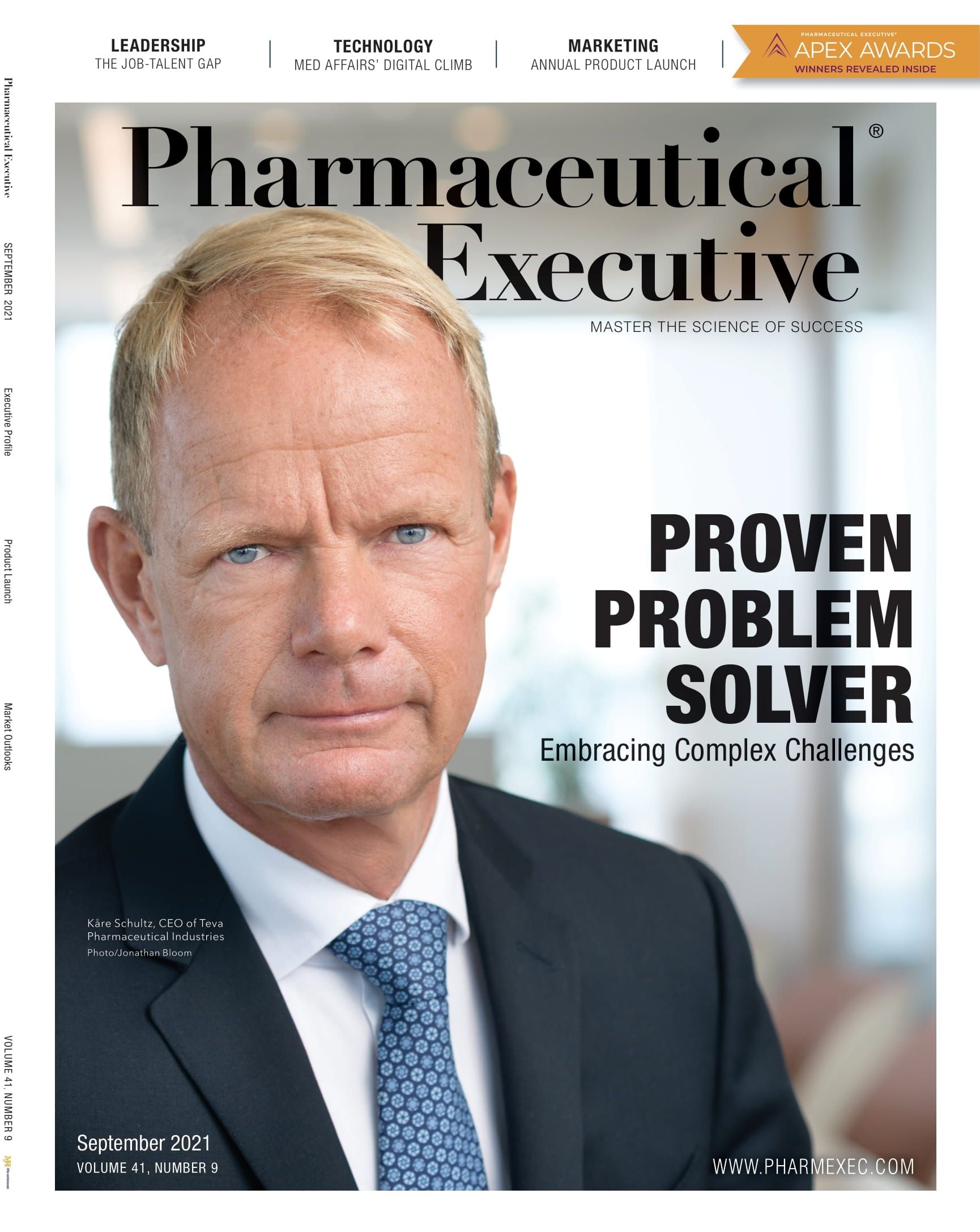Pharm Exec at 40 (2007–2010)
Looking Back at 2007–2010.
Little did the world know that when Apple announced the release of its first iPhone in 2007, it would indeed be a “revolutionary device ... that changes everything,” as co-founder Steve Jobs had promised. Not until 2009 would Android-powered phones begin to outsell Apple. Today, there are 6,378 billion smartphone users in the world. Not only have the devices changed the way people interact one-on-one, but they have altered how information is shared and broadcast around the world.
The iPhone, released that June, wasn’t around for such purposes during the tragic shooting spree on the campus of Virginia Tech a couple of months earlier, which killed 32 people. But it surely was used during the Southern California wildfires that began raging in October 2007—about 30 fires burned nearly 973,000 acres of land and destroyed at least 1,500 homes. Those totals could soon be eclipsed by the Dixie fire currently devastating Northern California.
To keep their minds off negative news, people could focus on the release of British author J.K. Rowling’s Harry Potter and the Deathly Hallows, the final book in her infamous Harry Potter saga. England’s new Wembley Stadium also was completed in 2007. In business news, Rupert Murdoch acquired Dow Jones & Company, which includes The Wall Street Journal, that summer.
The Great Recession, which lasted from December 2007 to June 2009, was highlighted by the burst of the US housing bubble in September 2008 and an ensuing global financial crisis. The most severe US economic situation since the Great Depression, this spurred unprecedented fiscal and regulatory response. The administration of President George W. Bush passed a $150 billion stimulus package and a $700 billion bailout, known as the Emergency Economic Stabilization Act of 2008.
In other political news, Fidel Castro stepped down in 2008 as president of Cuba after almost 50 years in power. 2009 kicked off with the inauguration of Barack Obama as the 44th President of the United States and the country’s first African-American commander in chief.
Days earlier, the “Miracle on the Hudson” left the world in awe, when Captain Chesley B. “Sully” Sullenberger made a successful landing in New York’s Hudson River after the airliner he was piloting was struck by a flock of Canada geese after takeoff. Though fans would have to wait until 2016 to see the film based on this event, in the late 2000s they could head to theaters to watch movies such as Pineapple Express, Step Brothers, and Burlesque. Artists like Lady Gaga and Taylor Swift started to top the charts along with Beyoncé, The Black Eyed Peas, and Rihanna. Music suffered a huge loss when the King of Pop, Michael Jackson, passed away in 2009 under strange circumstances.
In 2010, the Healthcare Reform Bill and Affordable Care Act, coined “Obamacare,” was signed into law. Other headlines that year included the US winning the most medals—37—at the Winter Olympics in Vancouver, Canada, and Spain capturing the 2010 FIFA World Cup in South Africa.
Time magazine named Facebook founder Mark Zuckerberg its 2010 Person of the Year, signaling the increasing use of social media that is an intricate part of everyday life now. With Apple’s release of its iPad in 2010, the age of devices and apps was taking off.
The pharma landscape
As the patent cliff loomed, big pharma started looking to acquire biotech companies in order to fill gaps in their drug pipelines. Biotech acquisitions in the US totaled $28.5 billion in 2008. Takeda’s purchase of Millennium and Eli Lilly’s acquisition of ImClone in 2008 were two noteworthy deals.
That same year, FDA approved 24 new first-in-class drugs, more than in any of the prior three years. New products included Pristiq, an antidepressant from Wyeth; Treanda, a treatment for certain types of leukemia and lymphoma from Cephalon; Amgen’s Nplate; and GlaxoSmithKline’s Promacta to treat certain blood conditions.
Severe plaque psoriasis drug Stelara got its FDA approval in September 2009, in the same year Prevacid and Nicorette earned theirs.
Also in 2009, the World Health Organization declared the H1N1 influenza strain, commonly referred to as “swine flu,” a global pandemic—something that pales in comparison to the ongoing COVID crisis. Swine flu claimed about 284,000 lives around the globe, while the coronavirus has taken close to 4.5 million and counting.
Miranda Schmalfuhs is an Assistant Editor for Pharm Exec. She can be reached at mschmalfuhs@mjhlifesciences.com.

Beyond the Prescription: Pharma's Role in Digital Health Conversations
April 1st 2025Join us for an insightful conversation with Jennifer Harakal, Head of Regulatory Affairs at Canopy Life Sciences, as we unpack the evolving intersection of social media and healthcare decisions. Discover how pharmaceutical companies can navigate regulatory challenges while meaningfully engaging with consumers in digital spaces. Jennifer shares expert strategies for responsible marketing, working with influencers, and creating educational content that bridges the gap between patients and healthcare providers. A must-listen for pharma marketers looking to build trust and compliance in today's social media landscape.
Beyond the Prescription: The Role Pharma Plays in Digital Health Conversations
April 1st 2025As social media continues to influence healthcare communication, it presents both challenges and opportunities for the pharmaceutical industry. In this interview, Jennifer Harakal of Canopy Life Sciences discusses balancing compliance with effective digital engagement to build trust and facilitate meaningful healthcare conversations.